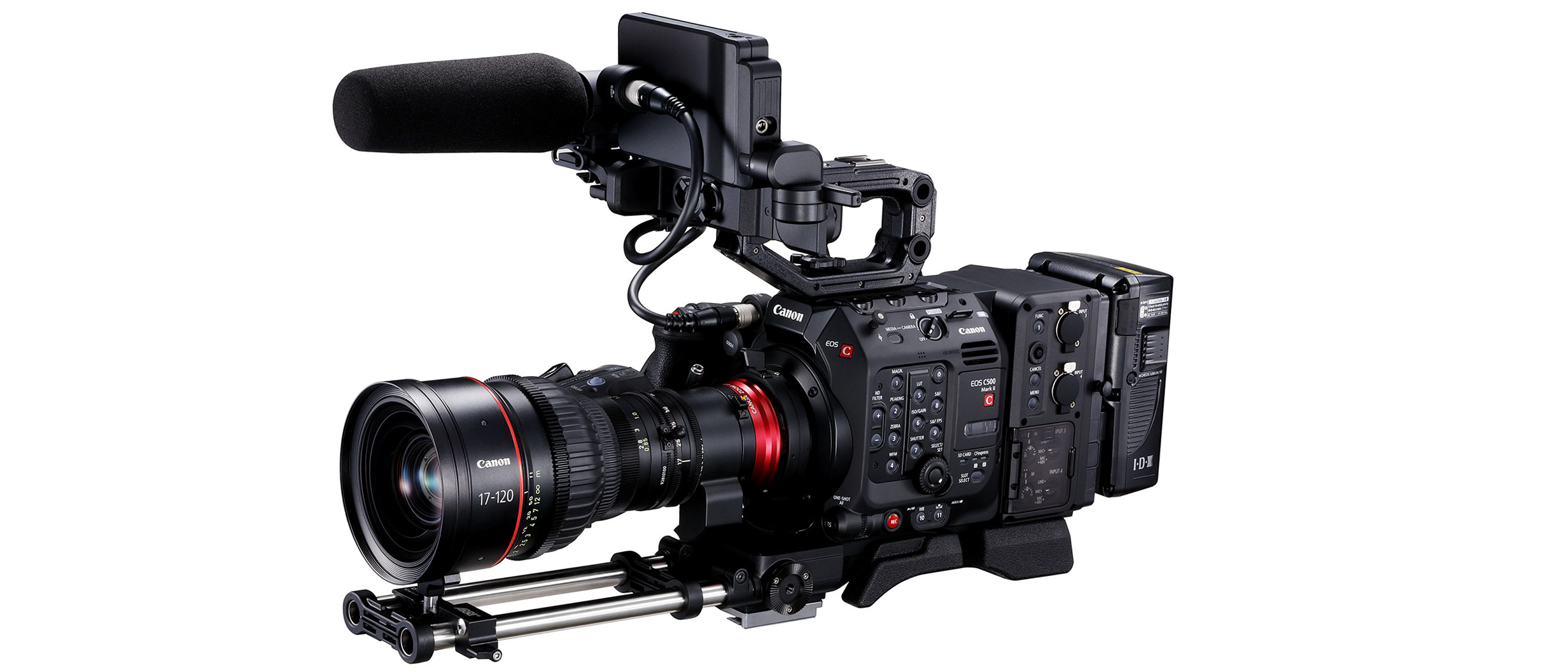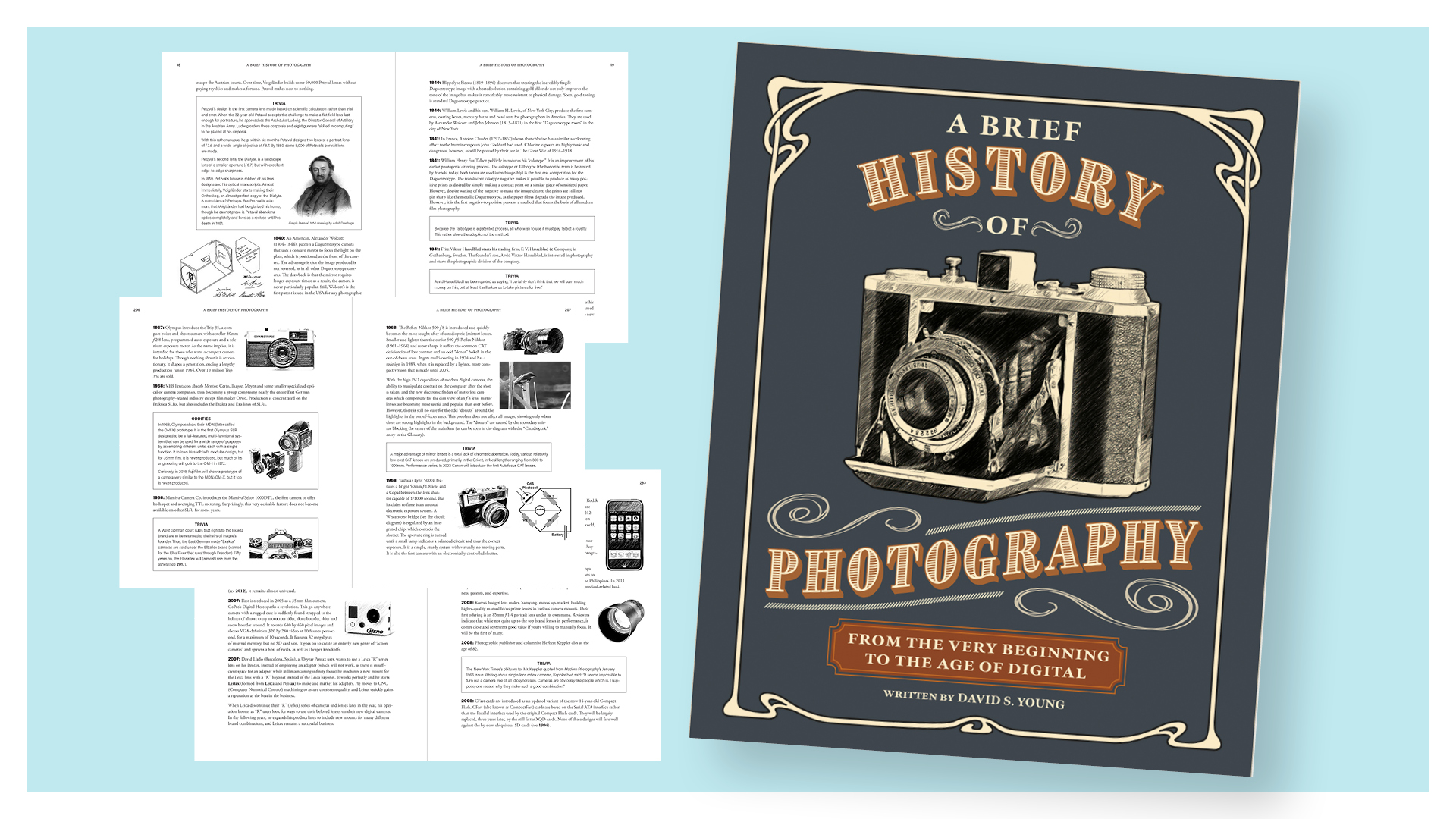Digital Camera World Verdict
The Canon EOS C500 Mark II uses the latest technology from the EOS R-series of Canon mirrorless cameras and puts it into a professional cinema camera that has a modular style to suit lots of different uses. It can be stripped down to use on a gimbal, or rigged up to shoot movies good enough for Hollywood. With a 5.9K full-frame 35mm sensor, it can record in incredibly high quality 12-bit Cinema Raw Light or 4K 10-bit 4:2:2 XF-AVC to memory cards. It has the impressive Dual Pixel CMOS autofocus and in-body image stabilization. However, the IBIS doesn’t work when recording in Raw and the fastest frame rate is 120fps with a sizable crop, so it’s not ideal for shooting action sports. But if you’re a generalist professional filmmaker, or want to be one, the Canon Cinema EOS C500 Mark II delivers everything you could need from a modern cinema camera. But with a body-only price of $15,999/£16,999, it’s for professionals or the most serious filmmakers only.
Pros
- +
A full-frame cinema camera
- +
Modular body gives flexibility
- +
Stunning AF for video
Cons
- -
It’s a pricey bit of kit!
- -
Large size and weight
- -
Files take lots of processing power
Why you can trust Digital Camera World
For the asking price, some could see the Canon C500 Mark II it as a bit of a bargain as it uses the same 5.9K full-frame sensor as the Cinema EOS C700FF flagship camera which costs around twice as much. That makes it the first full-frame cinema camera that can record cinema Raw that’s not totally out of the reach of independent filmmakers.
On the other hand you could perceive it as an incredibly expensive camera that doesn’t even offer the 8K recording of Canon’s flagship EOS R5 mirrorless camera that costs roughly a quarter the price. But a small mirrorless camera will never be able to match up to the Canon Cinema EOS C500 Mark II in terms of all-round usability in the real world of video shooting. Such as having no overheating problems.
The Canon EOS C500 Mark II mixes the best of high-end cinema cameras and mirrorless tech, in a modular body that can be stripped down for drones or gimbals or dressed up for movies with external monitors and the like, or fitted with accessory backs to allow full TV broadcast. For the important bits like ND filters, large battery packs or an external recording monitor to get the highest quality, you don’t need to bolt them on. It’s all built in.
The C500 Mark II uses the 12-bit Canon Raw Light recording format to a pair of CFExpress cards, but if you want full-blown 16-bit Raw you can add on a digital recorder. For faster workflow without Raw conversion, the camera uses the 4K 4:2:2 10bit XF-AVC recording codec which is broadcast and edit-ready.
All in a camera that has advanced phase-detection autofocus using lots of focus points, a bright touchscreen and 120fps recording for super slow-motion.
The standard EF lens mount can be unbolted in seconds with just four bolts. You can fasten an EF Cinema Lock mount which is ideal for Canon cine primes with a follow-focus rig attached, or a PL mount which supports the Cooke/i system to communicate lens data to the camera. So you can use everything from exotic anamorphic lenses, vintage glass or classic-style primes. There’s also a B4 mount adapter for TV-style lenses.
With a choice of body styles, lens mounts and codecs, the Canon EOS C500 Mark II is a truly flexible cinema camera.
Canon C500 Mark II: Specifications

Sensor: 20.8-megapixel full frame CMOS
Image processor: Dual Digic DV7
Video formats: Cinema Raw Light 4:2:2 12-bit 2.1Gbps, MP4 XF-AVC 4:2:2 10-bit 810Mbps; 5952x3149 6K 4096x2160 C4K, 3840x2160 4K, 2048x1080 2K, 1920x1080 FHD
Frame Rates: 59.94/50/ 29.97/ 25/24/23.98p
Fast frame rates: 60fps Cine Raw Light and XF-AVC full frame, 120fps in 2K
ISO range: 160-25,600, expandable 100-102,400
Dynamic Range: 15+ stops in C-Log2
Autofocus: Dual Pixel CMOS AF; one shot, continuous, face priority
Lens Mount: Canon EF (User changeable to PL)
Stabilization: 5-axis
Screen: 109mm/4.3in LCD touchscreen, 2.76 million dots
Viewfinder: Add-on LM-V2
Controls: Peaking, color bars, waveform, zebras, focus assist
Shutter Speeds: 1sec-1/2000sec
Filters: Up to 10 stop ND built in
Memory card: 2x CFExpress Type B, SD/ SDHC slot
LCD: Fully articulating 3-inch touchscreen LED, 1440K dots
Connectivity: Wi-Fi, Bluetooth, HDMI, 12G-SDI, Mini-B USB
Size: 167.6x152.4x147.3mm
Weight: 1.7kg (body only)
Canon C500 Mark II: Key features
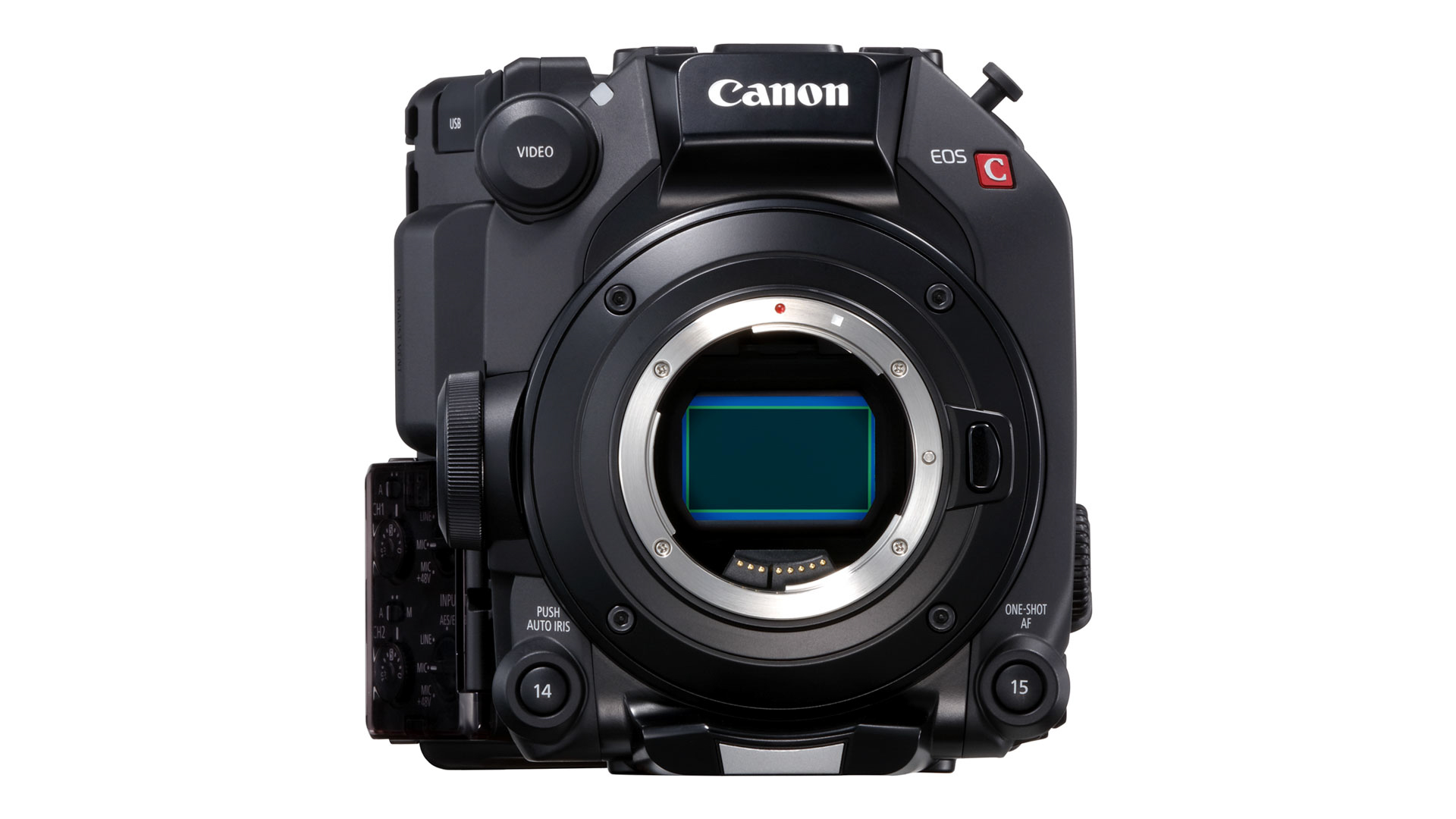
Of course, the heart of the camera is that full-frame sensor and new Digic DV7 processor to support 5.9K internal Cinema RAW Light in 12-bit from the full width of the sensor, and DCI 4K XF-AVC 10-bit 4:2:2. That means you can spend time in post processing to finesse the Raw files which makes them ideal for grading, or have an edit-ready C4K codec that’s faster to ingest, process and edit.
With such high quality files, getting the shots sharp are crucial which is where Canon’s Dual Pixel CMOS AF comes in. For traditionalists who only use manual focus then the unique Focus Guide shows whether the camera thinks the image is sharp, and displays arrows to show which way to turn the focus ring. In combination with focus peaking, it’s a great tool.
But the Dual Pixel CMOS, which uses on-sensor AF sites that cover 80% of the frame, is great at locking onto a subject and keeping it pin sharp. The continuous AF tracks moving objects well, and you can alter AF tracking speed and response to suit individual subjects. Using the LCD touchscreen, you can touch the screen and set a focus point, and the camera will track the subject. Or by touching a different point on the screen, the camera will rack focus.
And the camera doesn’t suddenly snap into focus on the new subject but the focus slows down when it’s near to full sharpness to give the shot a more traditional look.
There is also Face Priority AF which works very well. And you can also combine face detection with the focus guide to help you focus on the main subject manually.
As well as AF, the EOS C500 Mark II supports 5-axis electronic In-Body Image Stabilization but it’s not using a sensor in a suspended mount as when the camera is mounted into something like a gimbal or jib, the flexibly-mounted sensor can introduce some movement.
The camera has a fixed senor but when a lens that supports data transmission is attached, focal length data is received and the IS system matched to the lens, which is then cleverly countered automatically for in post processing. There is a slight crop of the image, though.
The IBIS works very well, especially with an image-stabilized EF lens. But the IBIS only works on XF-AVC and not when shooting Raw.
Canon C500 Mark II: Build and handling
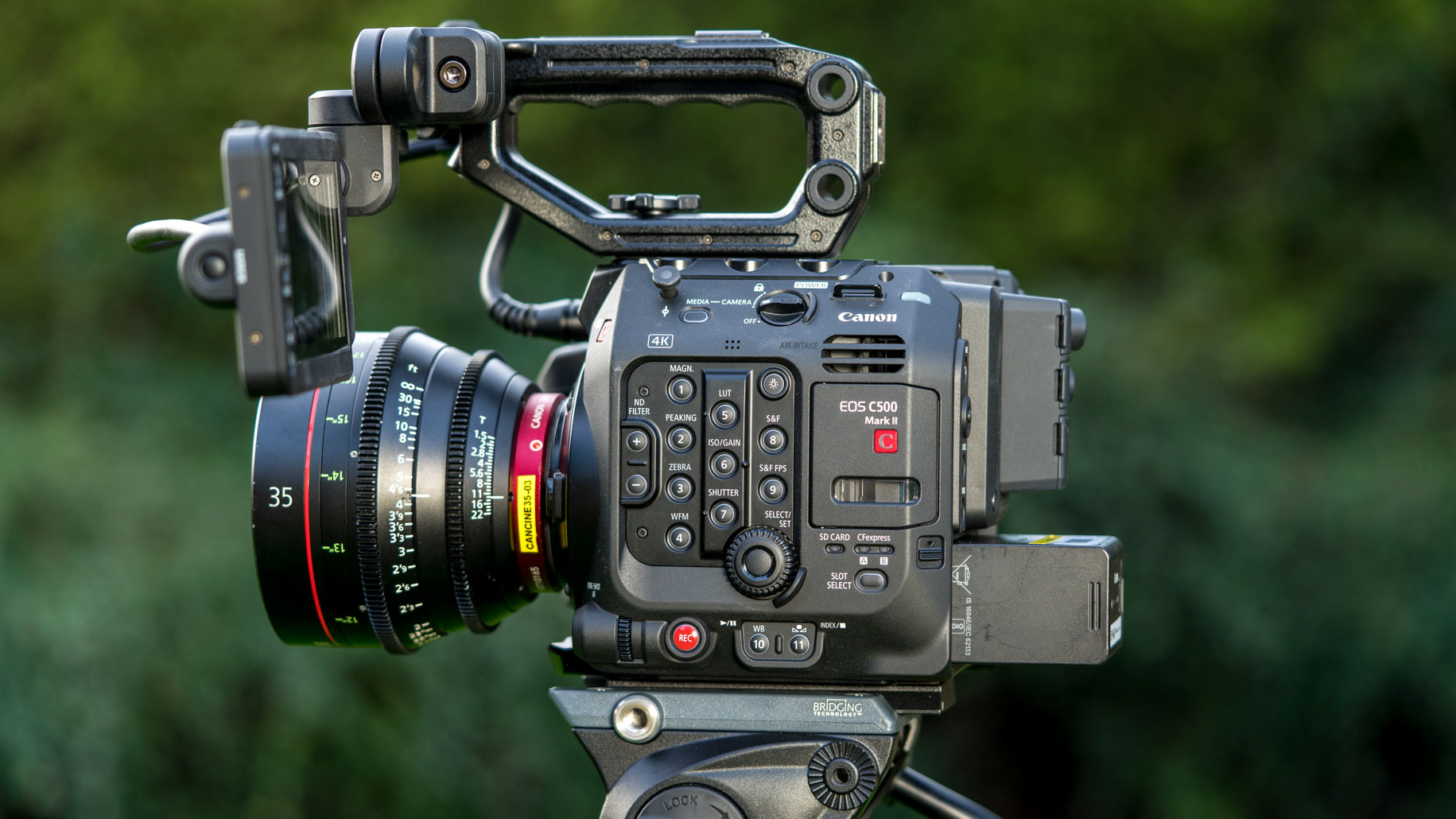
The C500 Mark II was the first of the new generation of Canon Cinema EOS cameras to use the modular body which it now shares with the newer EOS C300 Mark III. That camera uses the smaller Super35mm size sensor, similar to APS-C.
The full-frame model has built-in ND filters up to 10 stops, though these are the conventional stepped variety rather than the electronically variable type as used by Sony’s newest cameras like the FX9.
There are pro audio controls and a battery that lasts. The standard BP-A60 lasts for around 90m minutes but larger batteries are available.
The ergonomic grip can be adjusted, and there are lots of assignable custom buttons all over the camera. The menus can be accessed via a new on-screen display that is relatively easy to navigate. You can change settings via a large thumbwheel on the left of the camera body, or the joystick on the monitor. And there are waveforms, zebras and false color warnings to help you nail focus and exposure. There is full LUT support, and you can load your own too. There is a dedicated LUT button on the camera, and two buttons to access high frame rate recording. One turns on the high frame rates and the other allows you to change the fps.
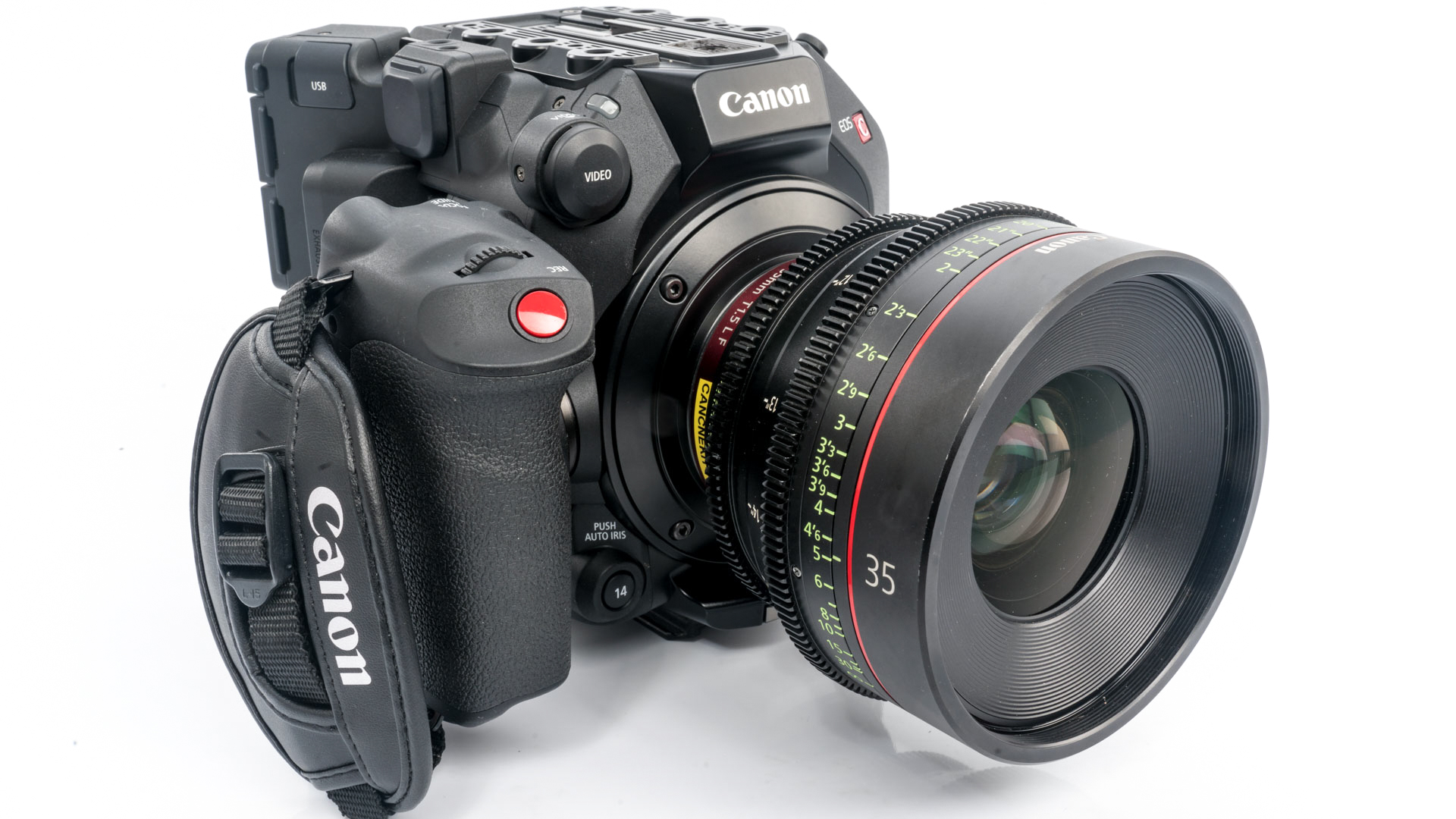
Bolt on the grip, top handle and bracket for the screen and you have a perfectly serviceable camcorder, ideal for run-and-gun documentary, wedding or event work.
At the rear is a port where you can plug in one of the accessories, such as tiltable, 1.77m dot OLED viewfinder which is solid and bright, with an adjustable dioptre wheel.
In its place you can mount two different units. The EU-V1 Extension Unit 1 offers ethernet for easy live streaming, a remote control socket and Genlock/ Sync out options ideal for multi-camera shoots. The larger EU-V2 Extension Unit has a V-mount plate for bigger batteries. As well as the additional connection of the EU-V1, it also adds on two XLR terminals, a 12-pin lens terminal and a 24V DC output socket. It turns the camera into a broadcast and streaming-ready production unit.
And if you are used to the ergonomics of Canon’s Cinema EOS range, you’ll have no problems quickly getting to grips with the camera.
Canon C500 Mark II: Performance
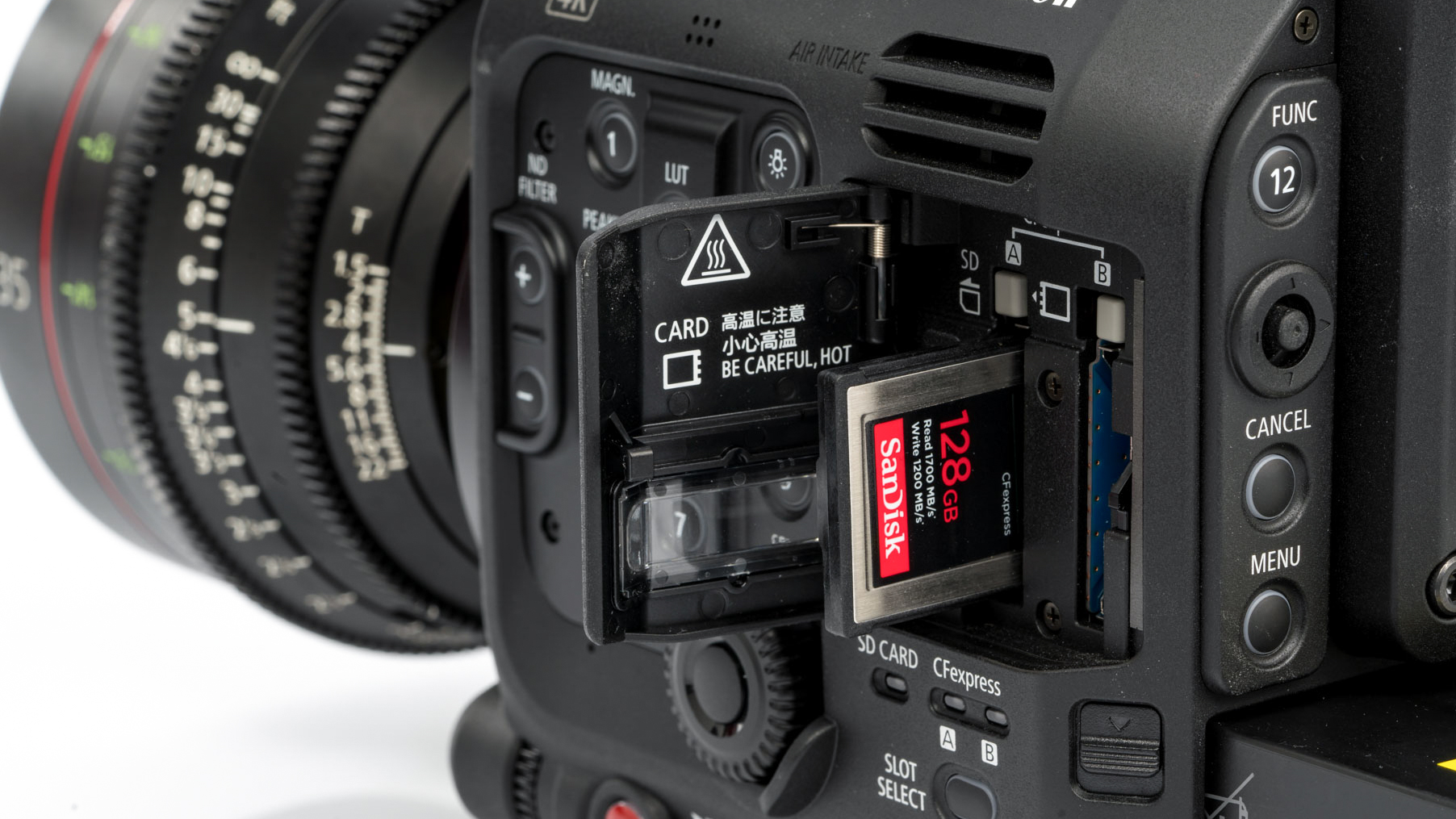
For a camera that comes with a 5.9K sensor, the EOS C500 Mark III is actually one of the best 4K cameras you can buy! That’s because the data from the 5.9K sensor is over sampled into 4K, which suppresses moire and reduces noise, resulting in very high image quality. Of course, you can record in 5.9K which gives lots of flexibility for cropping in post.
Obviously all these files are very data-intensive and will slow down all but the very latest and most expensive computers. Luckily, as well as recording Cinema Raw Light or XF-AVC internally onto CFexpress cards, simultaneous proxy recording is also possible. So you can edit these low-res proxy files rather than having full-size footage slowing down your edit, then replace them with the high-res Raw or XF-AVC footage for final output.
Of course, your editing software will generate low-res proxies at the ingest stage of you wish, but this will hugely increase the time it takes before you can start the edit. Having them ready right out of the camera is fast quicker.
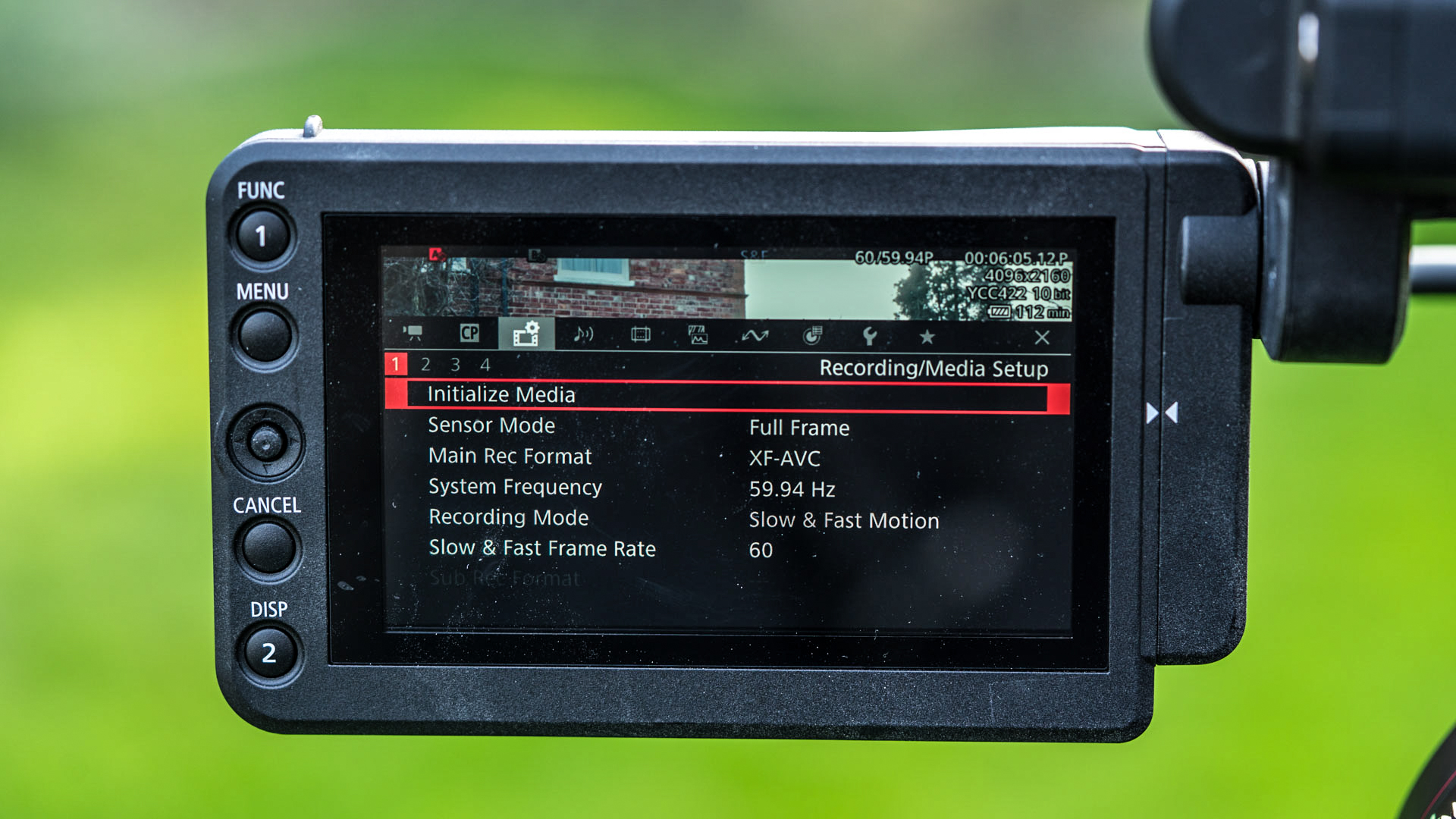
In terms of speed, the EOS C500 Mark II has a 12G-SDI interface which has four times higher transmission speeds of 3G-SDI. This enables 4K 50/60p output with a single SDI cable, ideal for broadcast use or external recorders. HDMI output also allows for 4K 50/60p recording.
The sensor is claimed to have more than 15 stops of dynamic range and is ideal for High Dynamic Range shooting, recording in PQ/HLG for HDR work and Canon Log 2 and 3.
For the best quality, Cinema Raw Light offers huge advantages over conventional codecs, as it maximises the data from the sensor from which you can drag out more highlight and shadow detail, then add sharpness, manage noise, change white balance and tweak the colours hugely in the grade. Canon has pioneered useable video Raw files and the C500 Mark II makes it easy to get incredibly detailed and sharp footage. In Raw or XF-AVC, the footage is incredible clean and noise-free as you’d expect from a large sensor.
There is 50/60p in 5.9K resolution with the Cinema RAW Light codec, but if you drop down to 2K or HD and that goes up to 120fps. In XF-AVC it’s up to 120fps but there is a crop. Canon has never been the manufacturer to go wild for high frame rates, and the maximum 120fps is the only slightly disappointing feature of the camera as rivals offer up to 120fps in 10-bit 4:2:2 4K or 240fps in FHD.
Where Canon does lead is in effective autofocus which works incredibly well and is easily customizable to suit all uses. And another big advantage over rivals is Canon’s 5-axis Image Stabilization which also works with anamorphic lenses. It’s no replacement for a gimbal but is certainly very useful for handheld work.
Canon C500 Mark II: Verdict
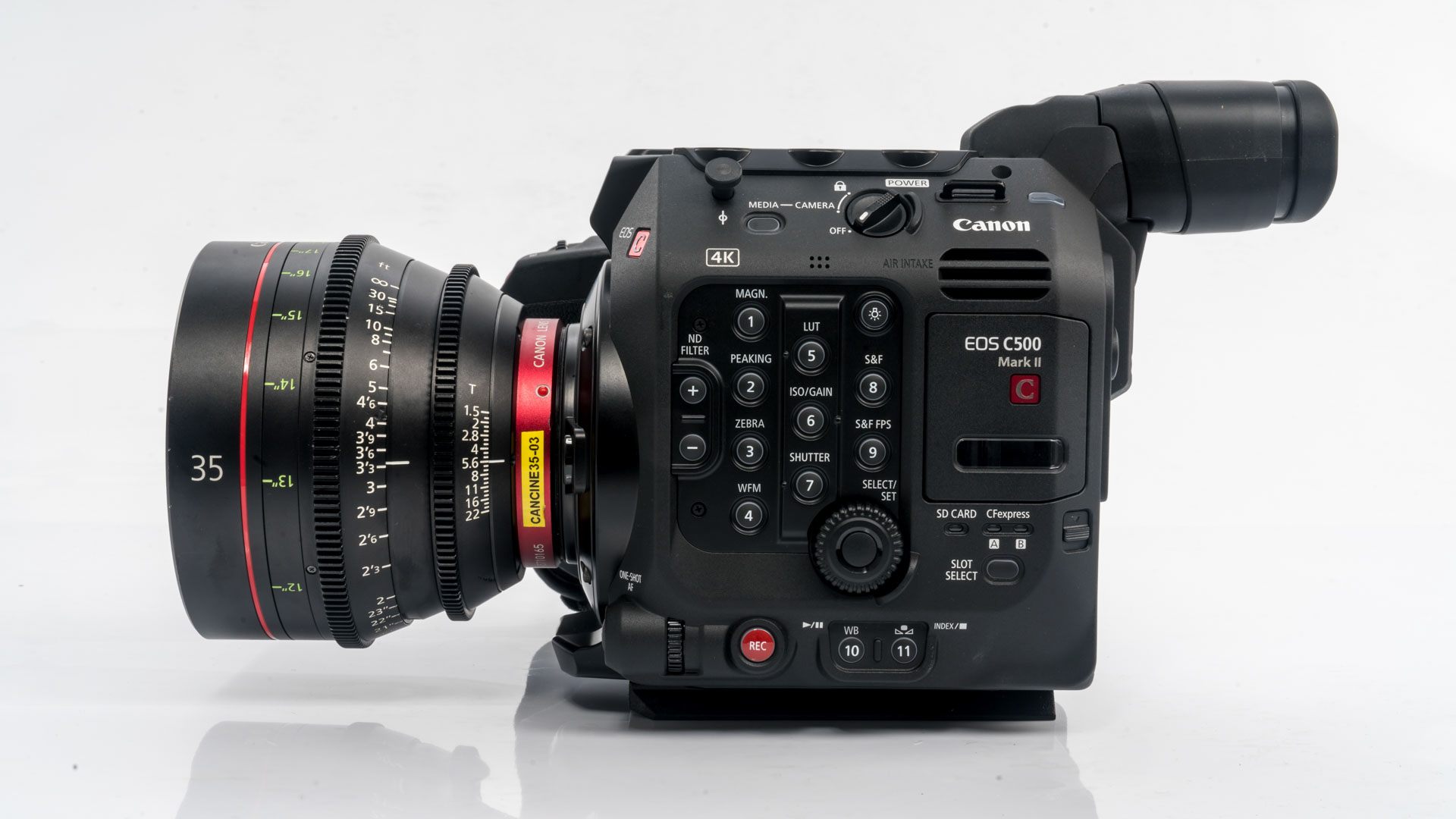
Creative filmmakers have long been yearning for the incredibly shallow depth of field and low-light performance you can only get with a full frame sensor, stunning autofocus that actually works, in-body image stabilization and manageable Raw files that you can record internally as well as 10-bit 4:2:2 broadcast-ready codecs. All in the body of a professional cinema camera. Ideally a body that can be used for every potential project, from high-quality Netflix drama productions to documentaries, weddings and commercials, live streaming and event coverage. And even TV broadcast, all in a camera that is relatively affordable rather than having to rent different cameras for different jobs all the time. The Canon EOS C500 Mark II delivers all those things in one package.
Read more
Adam Duckworth is an award-winning professional photographer and videographer based in the UK. He has worked for many top magazines, newspapers and corporate clients for more than 25 years. He was named SWPP UK Commercial Photographer of the Year, and is an Associate of the British Institute of Professional Photography. He has also worked for international publications like Motor Cycle News, Racer X, The Sunday Times, The Guardian, ZOO, Golf World, Today's Golfer, and Mountain Bike Action, among others.
